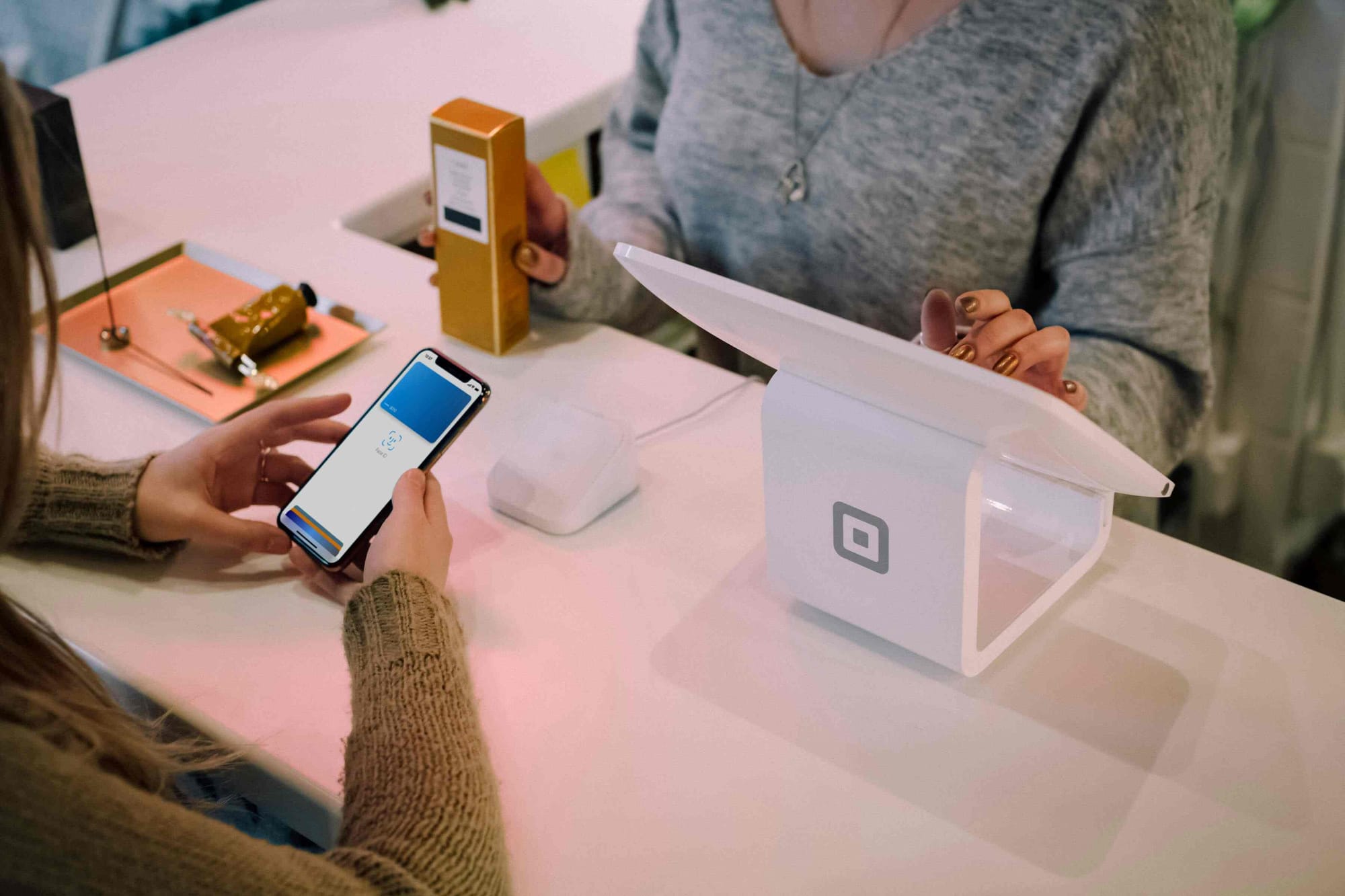Claire vs Primark: How digital transformation is redefining UK retail in 2025
![]() Carmen James
-
Carmen James
-
Claire’s decline and Primark’s success show how UK retailers must embrace digital transformation, omnichannel strategy, and payment innovation to stay competitive in 2025.
In today’s fast-changing UK retail landscape, the line between winners and losers is clearer than ever. Take Claire’s, once a go-to for teens, now struggling to keep pace with shifting shopping habits and stronger digital players like Amazon and Temu. By contrast, Primark is proving that even in a tough market, embracing digital tools such as click-and-collect to smarter omnichannel strategies can fuel growth. The contrast between these two high-street names highlights a blunt truth for retailers: survival now depends on how quickly you adapt to new consumer expectations.
How digital pressure is reshaping the UK high street in 2025
The pace of change on the UK high street has never been faster. In 2024 alone, more than 7,300 stores shut their doors, almost 70% more than the year before. Analysts warn 2025 could be even tougher, with as many as 15,000 closures expected across the retail sector.
Behind these numbers lies a clear pattern: retailers that embrace digital and omnichannel strategies are surviving, while physical-only businesses are falling behind. Consumers now expect online speed, mobile-first convenience, and seamless shopping journeys and retailers who fail to deliver risk becoming irrelevant.
Why traditional stores are struggling
Several forces are converging to squeeze brick-and-mortar retail:
- Shoppers have gone mobile-first, with 78% of UK consumers buying via smartphones and 72% price-checking online while in-store.
- Costs are climbing, from energy bills and rents to supply chain disruption, eroding already thin margins.
In this environment, investment in digital infrastructure, flexible payments, and customer engagement is no longer optional, it’s the difference between decline and growth.
Claire’s collapse: A case study in missed digital opportunities
Few examples illustrate this shift more starkly than Claire’s, the accessories and ear-piercing chain. Once a mall favourite for teens, Claire’s filed for bankruptcy in the US again in 2025, its second collapse in seven years. The scale of the collapse of Claire’s accessories in the UK has been particularly stark. With around 280 stores at the start of 2024, shoppers increasingly asked, “Is Claire’s closing down in the UK?” and “Is Claire’s shutting down?” as closures accelerated throughout the year.
The retailer’s biggest mistake? Failing to follow its audience. While competitors embraced digital retail, Claire’s had almost no meaningful online presence: no e-commerce platform, no click-and-collect, and no digital engagement strategy. Teenagers had already shifted to Amazon, Temu and Shein, browsing trends on TikTok and buying impulse items online long before Claire’s even contemplated opening a proper web store. So when people wondered whether the chain was shutting down, the truth was bigger than store closures. Claire’s had already lost the battle for digital relevance.
This failure to meet customers where they were shopping triggered a steep decline: from 4,500 stores worldwide in 2018 to just 2,750 today. In the UK alone, the company has racked up £25 million in losses over the past three years and faces growing liabilities linked to its global debt. With roughly 280 UK locations, including well-known sites in Glasgow, Edinburgh and Perth, analysts warn that up to a third of Claire’s shops could disappear.
For British retailers, Claire’s story is a cautionary tale: without strong digital engagement, omnichannel investment and evolving customer experiences, even the most recognisable high-street names can quickly lose relevance and their customer base.
Digital success stories: How Primark and smart UK retailers are winning online
Not every retailer is struggling. Some are proving that with the right digital strategy, physical stores and online platforms can work together to drive growth.
Primark’s strategic online evolution
Primark offers a sharp contrast to the digital missteps seen elsewhere on the high street. The retailer may be famous for its “treasure hunt” in-store experience, but it has been quietly building the digital infrastructure needed to support modern shoppers. Even the largest Primark in the UK, the 64,000 sq ft Trafford Centre flagship in Manchester, isn’t treated as a standalone success. Instead, Primark has been weaving its physical scale into a broader digital strategy.
In 2024, the brand launched its first mobile app in Ireland and Italy, with plans to expand it across the UK within 18 months. British media, including The Scottish Sun, described the move as a “landmark step” in Primark’s omnichannel evolution. It signals a meaningful shift away from Primark’s long-held “store-first” reputation towards a connected customer journey that begins online as often as it begins on the high street.
This is where Primark’s UK online store strategy becomes clear. Customers can now browse stock, check availability by location and use click-and-collect services through the UK Primark online store concept. The idea is simple: pair the brand’s vast physical footprint with digital convenience, making it easier for shoppers to plan visits, reserve items and pick up orders in-store.
This approach stands in sharp contrast to Claire’s. While Primark has turned its shops into hybrid destinations that serve both walk-in customers and online fulfilment, Claire’s never embraced an omnichannel model. Primark’s success shows how digital touchpoints can amplify the strengths of brick-and-mortar retail, while the absence of those touchpoints can leave even well-known brands struggling to stay relevant.
The numbers don’t lie
The link between online and offline channels is clear. Studies show that opening a new store can increase online sales in the surrounding area by an average of 6.9%, while closing a store can decrease sales by 11.5%.
Add to that the fact that 72% of UK shoppers now use their smartphones to compare prices while in-store, and the lesson is obvious: the retailers who are winning are those who adapt quickly to customer behaviour and blend digital with physical.
But success isn’t just about apps and omnichannel convenience; it’s also about understanding who’s visiting your digital storefront in the first place. With anonymous website visitor tracking, retailers like Primark can gain valuable insights into browsing behaviour long before a purchase or sign-up happens. By learning what anonymous visitors are looking at, where they drop off, and what brings them back, UK retailers can fine-tune their marketing and product strategies, turning casual browsers into loyal shoppers without compromising privacy.
The Omnichannel advantage: Why it matters for UK retailers now
Omnichannel retail brings online, in-store, and mobile shopping together into a single journey, making it effortless for customers to move between platforms. With UK shoppers demanding more convenience and flexibility than ever, this approach is no longer optional. It’s now the baseline for survival and growth.
Retailers who prioritise omnichannel strategies are seeing the rewards: stronger revenues, higher loyalty, and faster growth. And thanks to advances in eCommerce tools, businesses of all sizes can now reach customers far beyond their local high street.
Choosing the right UK eCommerce platform
The eCommerce platform market has become far more accessible in recent years, with three names leading the way globally:
- WooCommerce: Powers between 20-33% of e-commerce sites globally (with higher estimates up to 33%) depending on the dataset.
- Shopify: 4.8 million active stores globally, corresponding to around 10-11 % share of global e-commerce platforms.
- Wix: The e-commerce arm (Wix Stores) holds a modest share of around 4-5 % of e-commerce platforms globally, with lower share among top-tier sites.
For UK retailers, this means more choice than ever before. What used to require big budgets and technical teams is now available “off the shelf” for a monthly subscription.
Shopify vs WooCommerce: Which works best for UK retailers?
- Pricing: Shopify starts from around £25/month (with higher tiers offering more features). WooCommerce costs vary more widely, from £3 to £400+ per month, depending on hosting, plugins, and templates.
- Ease of use: Shopify is plug-and-play, making it quick to set up even for retailers with large inventories. WooCommerce offers deeper customisation but requires more technical knowledge.
- Sales features: Shopify includes its own POS machine, making it a strong option for retailers who sell both online and in person. WooCommerce needs third-party integrations.
- In short: Shopify is better for speed and simplicity, while WooCommerce suits those who want flexibility and control.
Scaling for different business sizes
Large retailers: Big brands with strong capital can invest in fully customised eCommerce ecosystems, complete with CRM integration, mobile apps, and advanced marketing automation.
Small to medium retailers: Most UK independents will see faster results with platforms like Shopify or WooCommerce, using professional templates and gradually adding plugins for payments, shipping, and SEO.
The good news? Modern eCommerce platforms have removed many of the old barriers to entry. Whether you’re running a single boutique in Manchester or a growing chain across the UK, there’s a clear upgrade path to scale online.
Where UK customers will shop in 2025 and beyond
The rules of retail are changing fast, and the smartest businesses are meeting customers where they already spend their time and money.
Social media is the new shopfront
Social commerce is no longer a side experiment; it’s becoming a primary sales channel. In the UK, TikTok Shop is already the fourth-largest beauty retailer, with products selling out in minutes through discovery feeds and live shopping sessions.
This shift is being fuelled by content creators, who are fast becoming the most powerful storytellers for brands. Analysts expect the creator economy to double by 2027, and forward-thinking retailers are treating creators like an extension of their marketing teams.
Platforms like Instagram are also stepping up, with brands using broadcast channels to share behind-the-scenes content, launch updates, and gather real-time customer feedback, creating genuine connections far beyond traditional ads.
WhatsApp: The overlooked opportunity
While TikTok and Instagram dominate headlines, WhatsApp is quietly becoming one of the most effective marketing tools. Messages on WhatsApp see open rates as high as 98% (compared to just 20% for email), and research shows that two-thirds of people who chat with businesses on WhatsApp end up making a purchase.
For UK retailers, WhatsApp presents a huge opportunity for personal, direct engagement, from order updates and loyalty offers to customer support.
Local shopping makes a comeback
Despite the surge in online buying, many shoppers are also rediscovering the value of local. Around 62% of UK consumers say they prefer to support small, community-focused businesses over big chains.
Independent retailers are finding success by blending digital with physical, using QR codes and apps to connect in-store experiences with online convenience. The result: customers get the best of both worlds.
Smarter ways to keep customers coming back
Technology is also reshaping retention. Retailers using AI and machine learning are seeing more than double the sales growth and 2.5 times the profit growth compared to those relying on old methods.
For UK businesses, this isn’t about replacing human connection; it’s about using data to make every interaction more relevant, timely, and personal. The retailers who can blend authentic relationships with smart technology will be the ones customers stick with.
How payment technology is powering the next wave of UK retail
Over the past few years, the way people pay has undergone a considerable transformation. Tap-to-pay is now the norm, younger shoppers are ditching wallets for smartphones, and even traditional banks are exploring blockchain. Meanwhile, AI-driven fraud protection is helping some providers improve detection rates by up to 300%.
For UK retailers, the message is clear: keeping up with payment innovation isn’t just about convenience, it’s about staying competitive. Customers expect instant, secure, and flexible payment options whether they’re shopping online or on the high street.
The rise of open banking
One of the most exciting developments is open banking, which allows secure sharing of financial data between banks and third-party providers. In the UK, this has enabled a wave of new services which make payments faster, cheaper, and safer.
Globally, open banking transactions were worth more than $57 billion in 2023, and by 2027 the number of secure API calls is expected to surge to 580 billion. For British retailers, open banking adoption signifies lower transaction fees, more options of payment platforms, and greater trust from customers who want speed without sacrificing security.
Comparing payment solutions for UK retailers
Retailers now have a wide choice of payment processors, each with their own strengths:
- Wonderful: A UK-based provider using open banking. Subscription pricing starts at £9.99/month, or as little as 1p per transaction. Its One by Wonderful app offers instant bank payments, shareable payment links, and QR pay for in-person sales.
- TrueLayer: Designed for enterprises, with powerful APIs for businesses that need custom integrations and complex infrastructure.
- Access PaySuite: Focused on multi-channel businesses, offering unified payments that connect online and offline experiences.
- Atoa: Specialises in QR code and in-store payments, making it attractive for retailers with lots of face-to-face sales.
All of these providers are FCA-regulated, meaning transactions are protected and customers don’t need to share card or account details, resulting in reduced friction and increased trust.
The real impact of open banking on UK retail and payments
Open banking isn’t just a buzzword; it’s already reshaping payments and financial operations for UK businesses.
For example, in January 2024, HMRC collected £3.5 billion using open banking, a 16% increase on the previous year. UK banks like Nationwide have cut account funding times by 75% by adopting open banking payments, meaning money moves faster and cash flow improves.
But the benefits go beyond speed. Open banking also enables:
- Improved identity verification to reduce fraud.
- Automatic invoice management for easier bookkeeping.
- Real-time reconciliation between banks and business systems, giving retailers instant visibility into finances.
How UK retailers can take action
Start by reviewing your current payment processes and costs. Identify areas where FCA-authorised open banking providers could simplify operations. Consider running a small trial programme alongside existing payment methods to test speed, reliability, and customer experience.
As the infrastructure continues to improve, early adoption can deliver:
- Cost savings on transactions and reconciliations.
- Better cash flow through faster settlements.
- Enhanced customer experience, making your store or online shop more competitive.
For UK retailers, open banking adoption can save money, reduce friction, and future-proof your payments.
From high street to online success: A 12-week eCommerce plan for UK retailers
Launching your online store might seem daunting, but with a clear roadmap, you can have a fully functioning e-commerce business in just 12 weeks.
Weeks 1 to 4: Laying your digital foundations
Start by understanding your current position. Map customer touchpoints, review existing sales channels, and identify any technology gaps. Set measurable goals, from revenue targets and customer acquisition to operational efficiency. Keep costs and platform fees in mind as you plan your budget.
Weeks 5 to 8: Building your online home
Choosing your e-commerce platform is like picking a new home for your business. Test options with sample products, whether you prefer the flexibility of WooCommerce or the simplicity of Shopify. Consider cost, scalability, features, and support before making a decision.
Once chosen, create your product catalogue, set up your store, and define pricing. Make sure the user experience is smooth while reflecting your brand’s personality and values.
Weeks 9 to 12: Launch, promote, and engage
It’s time to go live. Build a content calendar, polish social media profiles, and configure WhatsApp Business for seamless customer communication. Use email campaigns, welcome sequences, and personalised incentives to keep existing customers engaged.
Attract new clients through local partnerships, referral programmes, and targeted social media ads. Remember, launching your store is just the beginning. Continually analyse data, run A/B tests, and listen to customer feedback to guide improvements.
Why UK retailers can’t afford to delay digital transformation
Retail is changing fast, and businesses that hesitate are already falling behind. UK shoppers now expect flawless experiences across every touchpoint, personalised recommendations, and fast, convenient checkouts.
The good news? You don’t need to overhaul everything at once. Small, calculated steps can make a big difference: introduce simple automation tools, optimise your website, and implement an easy-to-use online payment solution. Each improvement builds confidence and momentum.
Meanwhile, AI-driven personalisation, seamless payment technologies, and automated customer support are reshaping the shopping experience. Retailers who adopt these tools early are positioning themselves to capture more market share, while slower competitors risk falling behind.
Consumer expectations are high, and tolerance for friction is low. The retailers who succeed in 2025 are the ones taking smart, deliberate action today. Don’t let another quarter pass; the time to act is now.
Transform your UK retail business with open banking and smart payments
The future of retail is digital, and open banking is at the heart of that transformation. For UK retailers, it’s no longer optional; it’s a strategic advantage. Recent examples make this clear. Claire’s accessories collapse showed what happens when a retailer doesn’t modernise its payment systems or digital presence. Claire’s closing down of their UK stores was driven not only by falling online sales but by a failure to meet basic customer expectations, including frictionless checkout.
Primark, by contrast, has embraced omnichannel retail. With the Primark UK online store now supporting stock checks and click-and-collect, customers can move between online browsing and in-store shopping much more smoothly.. Even the largest Primark in the UK operates with integrated payment options that reduce friction, whether customers shop in-store or online. The message for your business is simple: payment technology and digital experience must evolve together if you want to stay competitive.
So what does that look like in practice for retailers today?
Start by reviewing your digital presence. Functionality matters just as much as appearance. Look closely at your payment processes, because open banking isn’t just a trend; it reduces fees, speeds up settlements, and improves the customer journey.
Platforms like WooCommerce with BACS integration or TrueLayer’s instant bank payments can give your business a competitive edge, while tools like WhatsApp Business help turn browsers into buyers through personal, timely interactions.
Open banking also provides insight into real customer behaviour, helping you personalise marketing, optimise pricing and build deeper loyalty. Faster payments and smarter engagement mean more revenue and stronger customer relationships.
The third wave of open finance is already reshaping retail, travel and insurance. UK businesses that embrace these tools now position themselves to thrive, while slower competitors risk falling further behind. Start small, test often, and build steadily; each improvement brings you closer to a fully optimised, future-ready retail operation.
FAQs on digital transformation strategies
What is the key lesson for UK retail from Primark's 2025 digital success?
Primark's success hinges on a flexible, component-based tech stack, like its click-and-collect system. This enabled them to integrate new digital tools seamlessly, driving customer footfall and online engagement.
How can my UK high street business compete digitally like Primark?
Focus on creating compelling in-store experiences while developing a robust online presence. Primark utilises its website to drive foot traffic to its physical stores, leveraging click-and-collect to increase basket size.
What digital mistake did Claire's make that UK retailers should avoid?
Claire's struggled with declining sales and online competition due to a slow digital transition. They relied too heavily on in-person shopping as consumer habits shifted online, a critical mistake for UK retailers today.
FAQs on using AI in UK retail
How can UK retailers use AI to improve their business?
AI can personalise customer experiences, optimise supply chains, forecast demand, and provide 24/7 customer service with chatbots. This helps boost sales and reduce operational inefficiencies.
Is AI only for big UK retailers like Primark?
No, AI is scalable and affordable for small and medium-sized retailers. Subscription-based platforms offer cost-effective AI tools for analytics and customer engagement, providing a strong return on investment.
What types of AI are most useful for UK online stores?
Online stores benefit most from conversational AI chatbots, recommendation engines for personalisation, and AI analytics to understand consumer trends. These tools directly boost engagement and sales.
FAQs on leveraging open banking for retail
How does open banking affect payments for UK retail businesses?
Open banking allows third-party providers secure access to bank data with customer consent, enabling faster and cheaper payments by bypassing costly card processing networks.
Is open banking safe for my UK retail business and customers?
Yes. Open banking uses strong security protocols and requires explicit customer consent for every transaction. It is a highly regulated and secure payment method, overseen by financial regulators.
How can open banking be integrated into a UK eCommerce store?
Many payment gateway providers offer open banking integration. Select a provider with an API or ready-made solution for easy implementation.
FAQs on eCommerce and omnichannel for UK retailers
Why do I need an omnichannel strategy for my UK retail business?
An omnichannel strategy provides a seamless customer experience across all channels. This boosts loyalty and competitiveness against digital-first brands.
How can my UK online store be optimised for voice search?
Optimise for voice search by using conversational keywords, comprehensive FAQs, and a mobile-friendly design. Schema markup also helps search engines.
What's the best way to start my UK eCommerce plan in 2025?
Begin with a digital readiness audit, then build your online store on a scalable platform. Integrate secure payments, including open banking, and implement AI marketing.




